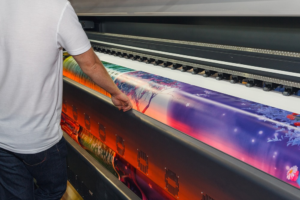Fashion is indeed a global industry with far-reaching impacts, and the statistics highlight some of the concerning environmental issues associated with it. Here are some key points to expand on the importance of sustainable fashion practices:
- Environmental Impact: The fashion industry is known for its significant environmental footprint. From the production of textiles and garments to transportation and disposal, it contributes to pollution, resource depletion, and greenhouse gas emissions. The massive amount of clothing waste ending up in landfills is just one example of this impact.
- Sustainable Practices: There is growing awareness about the need for more sustainable fashion practices. This includes using eco-friendly materials, adopting ethical labor practices, reducing water and energy consumption in production, and minimizing waste. Sustainable fashion brands are emerging to meet these demands.
- Repair and Reuse: The shift towards clothing repair and reuse is a significant step in the right direction. Repairing and repurposing old garments can extend their lifespan and reduce the need for new clothing purchases. It’s also a way to combat the throwaway culture of fashion.
The fashion industry’s environmental impact is undeniable, but there is hope for a more sustainable future. The shift towards clothing repair, reuse, and sustainable practices is a positive step forward in reducing waste and mitigating the environmental consequences of the fashion industry.

Repairing to save the earth
While mending and repairing may have become less common in recent years, there is a growing recognition of their importance in reducing waste, conserving resources, and promoting sustainable consumption. As awareness and accessibility to repair options continue to increase, it is possible that mending practices will regain prominence in our consumer culture.
In summary, mending and reusing clothing items not only help reduce the staggering amount of clothing waste in landfills but also contribute to a broader shift towards more sustainable and responsible fashion consumption. It challenges the disposable culture promoted by fast fashion and promotes a mindset of thoughtful and intentional clothing use. By participating in this movement, individuals can play a crucial role in addressing the environmental challenges associated with the fashion industry.
This approach empowers consumers to take control of their fashion choices and align them with more responsible and sustainable values. It shifts the focus from endless acquisition to valuing and preserving what we already own. Moreover, it fosters a sense of community and skill-sharing, with repair workshops, sewing circles, and online tutorials enabling individuals to learn from one another and acquire valuable skills for repairing and repurposing clothing.

Adapting repairing
The practice of visible mending has gained significant popularity in recent times, drawing inspiration from rich traditions such as Japanese sashiko and Indian kantha. Much like the Japanese art of kintsugi, which involves repairing pottery with metallic lacquer, visible mending celebrates the repair itself as a beautiful and meaningful part of the object. Instead of concealing the mending work, it proudly showcases it, honoring the history of the item.
Visible mending breathes new life into old and worn clothing. By incorporating embroidery or vibrant threads into the mending process, these pieces of clothing are transformed, making them feel fresh and one-of-a-kind. This style of mending also weaves a narrative into the garments, revealing their past, present, and future journeys. It serves as a tangible reminder of a world with reduced consumption and heightened sustainability consciousness.
As a contemporary fashion movement, visible mending celebrates individuality and personal style. Repairing clothes imbues them with a unique quality that reflects the owner’s personality, sparking curiosity and conversation. A denim jacket adorned with visible mending can become a storytelling canvas, inviting inquiries about the experiences and memories tied to it. Yet, it’s important to recognize that visible mending has deep historical roots spanning centuries, and its resurgence today draws from the cultural and artistic heritage of the past.
Furthermore, visible mending aligns with the principles of sustainability and environmental consciousness. Its emphasis on storytelling through repair makes it an embodiment of a broader climate movement. It encourages people to reflect on the value of their possessions, cherish them, and reduce the demand for new products, thereby contributing to a more sustainable and mindful approach to fashion and consumption.
In essence, visible mending is not just a fashion statement; it’s a visual testament to the connection between individual expression, cultural traditions, sustainability, and climate awareness. It underscores the idea that every garment carries a story, and by repairing and celebrating these stories, we can collectively build a more sustainable and meaningful future.


